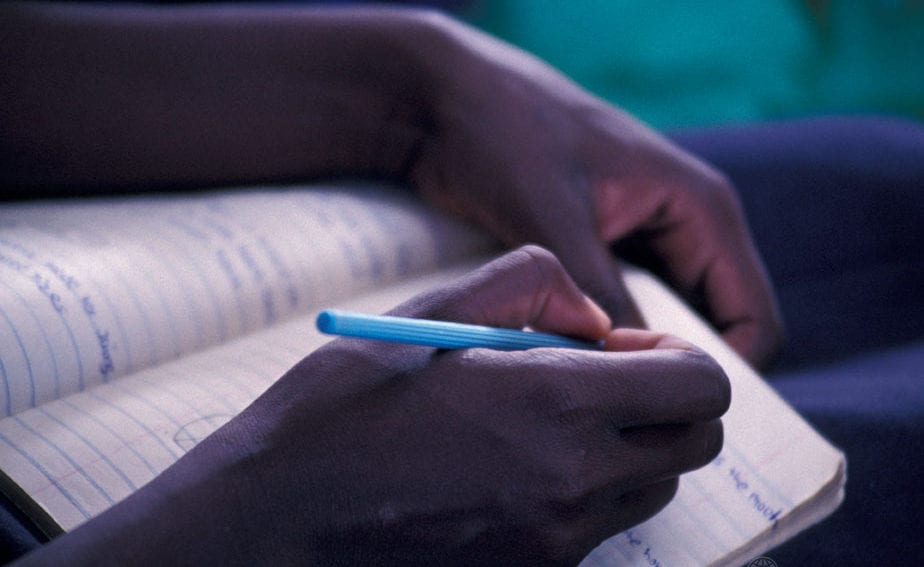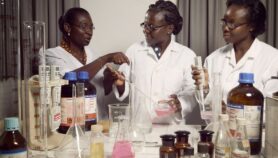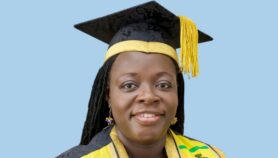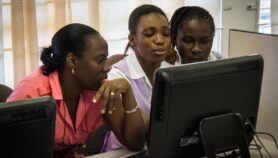Send to a friend
The details you provide on this page will not be used to send unsolicited email, and will not be sold to a 3rd party. See privacy policy.
Getting more students into substandard courses will do little for innovation, say Patrício Langa and Gerald Wangenge-Ouma.
In the 1980s education economist George Pascharopoulos claimed that the average dollar invested in primary education in Africa returned twice as much as the dollar invested in higher education. [1] The World Bank believed him, and ever since, higher education on the continent has struggled to position itself as an important investment priority and as a key driver for development.
We contest the logic that higher education in Africa is a secondary investment priority: it is crucial for Africa’s development. However, the conditions under which tertiary education operates in many African countries are not conducive to it making a useful contribution to development through the key pathways of research and innovation.
There is ‘exclusion from within’ in African higher education. Students gain access to university but are excluded from a meaningful relationship with knowledge. The so called ‘evening programmes’, now offered widely by African universities, illustrate our argument.
Credentials, not learning
Evening programmes emerged in the 1990s as a response to both increasing demand for higher education and declining state funding. They reflect the commercialisation of higher education in several countries including Kenya, Mozambique and Uganda.
These programmes attract two main types of students. The first is students from disadvantaged socio-economic backgrounds who attended secondary schools but could not secure a place in a public university under the state-subsidised stream. The second is working students who are looking to improve their qualifications as a way to increase their wages.
“Innovation involves thinking about new ways of engaging with reality and not merely about acquiring credentials.”
Patrício V. Langa and Gerald Wangenge-Ouma
Students generally have paid jobs during the day to support their studies. In many cases, when they come to the university in the evening, they are tired (sometimes even sleep in the classroom). Often they cannot cope with the reading or other academic activities that are critical to the learning process.
The problems don’t stop there. Being able to pay fees has become almost the only admission criterion for many such programmes. We have started seeing fast-track courses, with graduates using their newly acquired credentials to secure higher salaries. In these programmes, many ‘lecturers’ tend to be teaching assistants who have no academic profile.
Crucially, the environment in such classes does not resemble that of a vibrant university where students are busy in laboratories, libraries, and study groups inside and outside the classroom. Apart from a lecturer, usually looking more like a preacher speaking to a crowd, there is nothing that resembles an intellectual and academic endeavour.
Knowledge for innovation
Students in such institutions may have overcome the barrier of access. But they enter poor learning environments where research is a foreign phenomenon, lecturers are under-qualified and students under-prepared. So they cannot access what sociologist of knowledge Michael Young calls the “powerful knowledge”, that is they do not learn to engage with reality from a scientific point of view.
Young’s concept of powerful knowledge rests on a distinction between two types of knowledge: the scientific (conceptual) and the everyday (or common-sense) knowledge. Establishing a meaningful relationship with knowledge requires students to acquire the conceptual tools necessary to study reality.
Higher education institutions, universities in particular, are places where reality is — and should be — treated as an object of study. They should not be just an environment where people spend time to obtain a credential that ‘qualifies’ them for a profession or a job.
Under the conditions described above, the university essentially ceases to exist as a knowledge institution. There is no way that this kind of higher education can contribute to development meaningfully through innovation. Innovation involves thinking about new ways of engaging with reality and not merely about acquiring credentials.
If innovation is to be understood as achieving some form of originality, whether scientific or technological, then its precursor — learning — must become a process of actively constructing knowledge. Therefore, to realise greater returns from higher education, and for it to become a hub for innovation, it’s essential to re-think its conditions of existence.
African governments must ask themselves the question, ‘What do we want from higher education?’ If the answer is merely increased access, then they need not worry, they are achieving this objective. But, if they desire higher education institutions to drive their countries forward in the global knowledge economy, then they must steer universities accordingly and actively engender a scientific ethos.
Patrício V. Langa is coordinator of the master’s programme in higher education studies in the education faculty at Eduardo Mondlane University in Maputo, Mozambique. Gerald Wangenge-Ouma is director of institutional planning at the University of Pretoria, South Africa. Langa can be contacted at [email protected] and Ouma can be contacted at [email protected]
This article is part of the Spotlight on Making higher education work for Africa.
References
[1] George Psacharopoulos Returns to investment in education: a global update World Development 22(9):1325-43. (1993)














